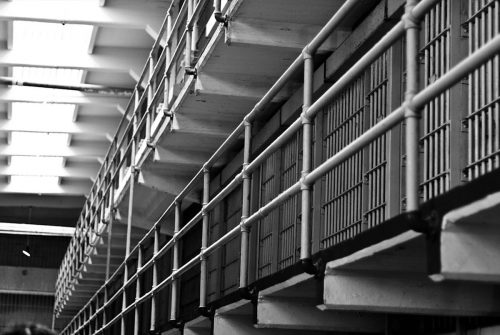

By Emily Saroyan and Ramneet Singh
NORTHAMPTON, MA – In a recent report, Emily Widra of the Prison Policy Initiative explained how its data details the origin of prison populations, the wide ranging impact of that prison population, and what could be done to reduce incarceration rates in targeted communities.
Widra prefaces the discussion of the data by questioning the geographical origins of the prison population in California, Colorado, Connecticut, Delaware, Maryland, Montana, Nevada, New Jersey, New York, Pennsylvania, Virginia and Washington. The data for each state is linked in the report.
Part of the initial focus of this piece is on prison gerrymandering, which the states listed no longer participate in. These states now attribute incarcerated individuals to their residence.
The linked source notes that part of the issue is that Census Bureau data has counted people in their place of incarceration instead of their residence, and “counting the people in prison in the wrong place now undermines the Supreme Court’s requirement that political power be apportioned on the basis of population.”
Of note is that incarcerated individuals in most states are not allowed to vote.
This can have an impact at state and local levels, the report suggests, so “the districts with large prisons send representatives to the state capitol who have less constituents than the representatives from districts without prisons.”
Moving back to the original report, Widra aims to dispel the misconception that incarceration is an issue specific to urban areas, specifically by looking at Pennsylvania.
The data shows “out of Pennsylvania’s top five highest imprisonment counties, three — Venango, Jefferson, and Warren — are rural counties in the western part of the state with significantly higher poverty rates than most of the state.”
This section links to an article titled the Prisons of Poverty by Bernadette Rabuy and Daniel Kopf. Part of their findings stated that “in 2014 dollars, incarcerated people had a median annual income of $19,185 prior to their incarceration, which is 41 percent less than non-incarcerated people of similar ages.”
Following that, Widra described the connection between drug use and legal involvement in Western Pennsylvania, comparing it to broader data.
Based on the data, Widra describes, “Poverty, substance use, and inadequate mental health care (are) the primary drivers of criminal-legal involvement across the country.”
Widra followed that by discussing city and county data, noting connections to poverty and race. Widra uses Los Angeles and Denver to expand on this point.
Widra notes “Elyria-Swansea — the Denver neighborhood with the third-highest incarceration rate of 1,176 per 100,000 — residents are more than 80 percent Latino and approximately 33 percent live in poverty.”
A diagram in the report shows the significant difference in incarceration rate between Elyria-Swansea and a neighborhood that are “miles apart.”
Widra said this could be attributed to historic material factors, expanded upon through the section, noting “neighborhoods with high incarceration rates are usually facing the modern-day repercussions of the mid-20th century’s racist redlining and blockbusting policies and practices.”
An important question that should be identified is understanding the differences between low- and high-incarceration-based communities, the report states, noting the greatest impact on communities are when parents, voters, and workers are locked up. With these adults locked up, many families are broken up and community-based growth is destabilized.
Researchers write about a significant connection between high incarceration rates to the decline of standards of living for the communities there.
From research conducted by the 2010 Census, the report said “we found that Baltimore communities with high rates of incarceration were more likely to have high unemployment rates, long average commute times, low household income” among other things.
These negative effects which are correlated to high incarceration rates range from a decrease in life expectancy, community health suffering, a decline in mental health, a greater form of environmental dance, and low access to community resources, authors state.
This piece utilized data found within these 12 state-specific reports to identify which neighborhoods have been experiencing constant and systematic forms of disadvantage due to high incarceration rates. Thus, the implications and uses of these records of data have been used to determine how to create better community-based programs and reentry services.
The collection of data also has indicated various geographical locations throughout the United States where there needs to be a more prominent aspect of investment for legal services and programs to adjust the harm that incarceration rates create.
Results have shown once community members are removed through incarceration, the community suffers, creating immense collateral consequences. With research completed, these communities can be targeted for a greater form of support and research to improve overall health, employment opportunities, and education.
Among other things, Widra points out “investing in core community resources to mitigate structural issues like poverty, such as housing and healthcare, will reduce vulnerabilities for criminal legal system contact.”
Children of these communities suffer even more, the author said, growing up with a lack of resources and trauma when having an incarcerated parent. Information in this piece indicated how to support and provide greater resources in response to this incarceration to decrease the familial and generational cycle of incarceration. /p>
/p>
